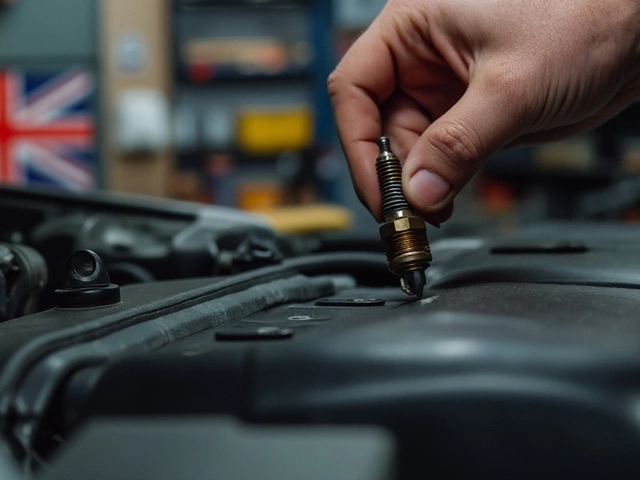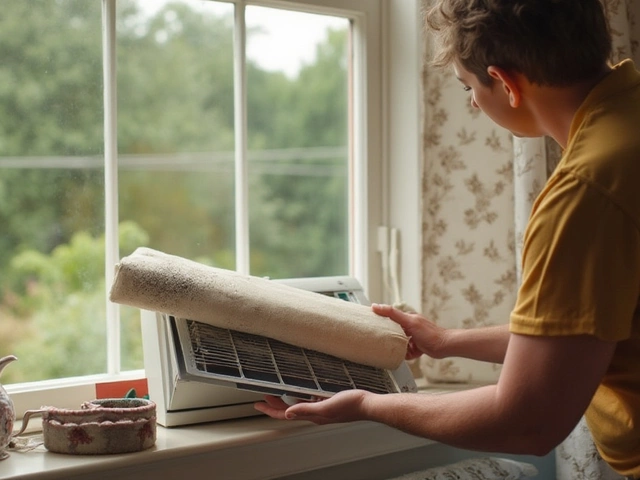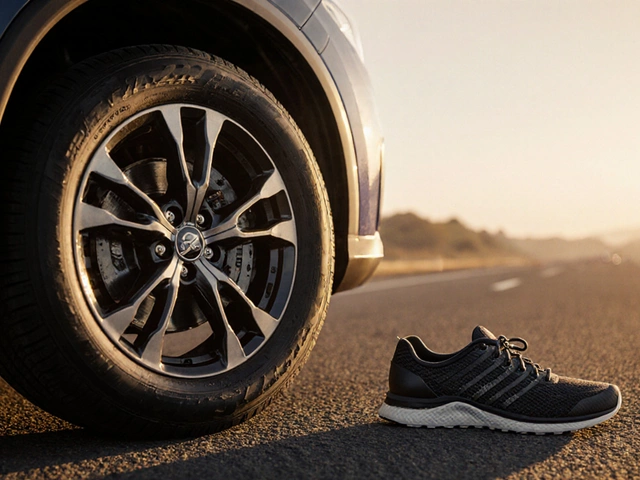Knowing when to swap out your brake pads can be a game changer for both your safety and your budget. You don’t want to push it until you hear that awful grinding sound every time you stop—at that point, there’s usually damage to more than just the pad. Brake pads don’t follow a strict expiration date, so you need to pay attention to a mix of mileage, signs, and good old common sense.
Most drivers end up replacing brake pads somewhere between 25,000 and 65,000 miles. That’s a huge range, right? It all depends on your car, the roads you drive, and especially how you treat that brake pedal. Daily stop-and-go city traffic? You’ll wear them out faster. Cruising on open highways? They’ll last longer.
One thing’s for sure: skipping brake maintenance is risky business. If your pads go too far, repairs can easily cost two or three times as much. My advice? Keep an eye (and ear) out for any weird noise or vibration when you brake. And if your mechanic gives you a heads-up at routine checks, don’t put it off. A little attention now saves bigger headaches (and bills) later.
- What Impacts Brake Pad Lifespan?
- Spotting the Signs: When Are Brake Pads Worn Out?
- How Driving Habits Change the Timeline
- Pro Tips to Make Your Brake Pads Last
- Don’t Ignore These: Dangers of Skipping Replacements
What Impacts Brake Pad Lifespan?
Lots of drivers think all brake pads wear out at the same time, but that's just not true. How long your brake pads actually last depends on a bunch of factors that go way beyond just ‘how much you drive.’
First up, the type of pad matters. Organic pads wear out faster than ceramic or metallic ones, which usually last longer but might cost a bit more upfront. The kind of car you drive is another piece. Heavy cars (like big SUVs or full-sized trucks) burn through pads quicker than small sedans. Makes sense—more weight to stop means more work for your brake pads.
If you do mostly city driving, with constant stopping and starting, your pads won’t last as long as they would if you spent most of your time on highways. In fact, people who mostly drive in traffic might need a brake pad replacement in half the time of someone who commutes on open roads.
Your style behind the wheel counts, too. If you brake late and hard, your pads are going to vanish much sooner. Driving gently, leaving more space, and braking smoothly can stretch out their life in a noticeable way.
Let’s break down the biggest factors:
- Pad material – ceramic lasts longer than organic
- Car weight – the heavier your ride, the harder your brakes work
- Driving environment – city driving chews through pads, highway driving doesn’t
- Driving habits – smooth braking = longer pad life; aggressive braking = more frequent changes
- Quality of parts – cheap pads wear faster and may not perform well
- Road conditions – lots of hills or towing can shorten lifespan
It’s wild, but two cars from the same year and model can have totally different brake pad wear in the same neighborhood—just because one driver rides the brakes while the other coasts more. It really pays to know these factors so you’re not caught off guard.
| Driving Style | Estimated Pad Lifespan (miles) |
|---|---|
| Mainly highway, gentle braking | 55,000–65,000 |
| Mixed city/highway | 35,000–50,000 |
| Mostly city, frequent hard braking | 20,000–30,000 |
One last tip: no matter how or where you drive, keep up with your car’s regular checks and listen for squeaks or a softer brake pedal. That’s usually your best warning before things get expensive.
Spotting the Signs: When Are Brake Pads Worn Out?
Catching worn-out brake pads early can save you a ton of trouble. Your car usually gives you clear signs when it's time for new pads—if you know what to look (and listen) for. Let's check the main clues your brake pads are running thin.
- Squealing or squeaking: Most modern pads come with built-in wear indicators that make a high-pitched noise when you're braking. This squeal means the pads are getting thin and need to be replaced.
- Grinding sound: If you hear metal-on-metal grinding, stop and check your brakes ASAP. That's usually the sound of your pads being so worn out that their metal backing is hitting the rotor—big repair bills if you wait.
- Vibration or pulsing: If your brake pedal shakes or feels weird when you hit the brakes, your pads might be unevenly worn, or the rotors could be warped. Either way, you should get them checked fast.
- Longer stopping distance: If it suddenly takes more road to come to a stop, worn-down pads could be the culprit. Don't gamble with this—give your car a checkup.
- Dashboard warning light: Some cars come with a brake warning light that flips on when pads are worn. If it lights up, take it seriously.
You can also do a quick visual check if your wheels have open spokes. If you see less than 1/4 inch left on the pad, it's time to swap them out.
| Status | Pad Thickness |
|---|---|
| New | 8-12 mm |
| Check/Consider replacing | 4-5 mm |
| Must replace | 3 mm or less |
Staying alert to these signs keeps your brake pads in check—and helps avoid suddenly finding yourself with barely any stopping power right when you need it most.

How Driving Habits Change the Timeline
Your driving style has a bigger effect on brake pad replacement than you might think. Aggressive drivers who brake hard at every stoplight will chew through brake pads way quicker than folks who coast gently and use the brakes only when they have to. If you're always in city traffic, constantly stopping and starting, your pads will likely need swapping closer to 25,000 miles. If your daily drive is mostly easy highway miles, you might not replace them until 60,000 or beyond.
Check this out: A U.S. Department of Transportation survey found that urban drivers can use their brakes up to three times more every mile than highway drivers. No wonder city driving wears out your brake pads so fast.
"Repeated hard braking increases pad temperature and wear, leading to more frequent replacements," says the experts at Car and Driver. "Smooth, gradual braking extends both pad and rotor life."
Here’s a quick rundown of habits that’ll make your pads last:
- Don’t ride the brakes downhill—shift your car into a lower gear instead.
- Leave some following distance so you’re not always tapping the brakes at every hiccup in traffic.
- Coast when you can, especially in slow traffic, to cut down on wear.
- If you drive with heavy cargo or tow trailers, expect your brake pad replacement timeline to be shorter.
Rufus, my dog, gets excited on road trips, but I always keep it chill behind the wheel—that way, my car maintenance costs stay lower and Rufus gets more rides overall.
| Driving Style | Estimated Pad Life (Miles) |
|---|---|
| Aggressive/City | 25,000 - 35,000 |
| Moderate/Mixed | 35,000 - 50,000 |
| Gentle/Highway | 50,000 - 65,000+ |
If you rethink how you brake, you’ll literally save money each year you own your car. Tiny changes add up to fewer trips to the shop—and less hassle.
Pro Tips to Make Your Brake Pads Last
If you want your brake pads to stick around for as long as possible, there are a few habits you can build into your driving right now. No fancy tools or deep car knowledge needed—just pay attention to how you use those brakes.
- Coast Instead of Brake: Whenever you see a red light or slow traffic ahead, take your foot off the gas early and let your car coast to slow down. Less pedal time means less wear on your brake pads.
- Don’t Ride the Brakes: Some folks keep their foot resting on the pedal, especially on long hills or in heavy traffic. That constant minor pressure wears out pads fast and can overheat them.
- Lighten Your Load: Hauling a bunch of heavy stuff (or too many bags of dog food for Rufus) puts more demand on your brakes. Try to empty your trunk of anything you don’t need.
- Stick to Speed Limits: Hard, last-second stops burn through brake pads way faster than smooth, gentle stops. Try to slow down with traffic, not at the last moment.
- Space Out in Traffic: Stay back from the car in front of you. You’ll have more time to react and won't need to brake hard or often.
If you’re curious about actual numbers, check this out:
| Driving Style | Average Brake Pad Lifespan (Miles) |
|---|---|
| Mostly Highway | 50,000 - 65,000 |
| City/Stop-and-Go | 25,000 - 35,000 |
| Aggressive Driving | Less than 20,000 |
Finally, don't miss those regular maintenance checks. Even a quick look from your mechanic can catch early wear before you’re dealing with metal-on-metal. If you start noticing any squeaks, odd smells, or it takes longer to stop, get your brake pads checked out. Staying on top of it is way cheaper and way safer in the long run.

Don’t Ignore These: Dangers of Skipping Replacements
Putting off brake pad replacement can land you in some serious trouble. Worn-out pads don't just squeak; they actually make it harder to stop your car, especially in an emergency. That extra few feet you need to brake could be the difference between a close call and a crash.
When you wait too long, old brake pads grind away until there's basically nothing left, and the backing plate starts chewing into your car’s rotors. Once rotors are damaged, you're looking at a hefty bill, way more than a quick pad swap. Rotor replacement can easily run you several hundred dollars, sometimes even more for higher-end vehicles.
A lot of brake systems are built with a warning sensor—sometimes it's a metal tab, sometimes it’s electronic. If you hear a sharp screech every time you brake, that's your car saying "help!" Ignoring it means you'll start hearing grinding or a deep metal scrape, which almost always means you’ve already caused damage beyond the pad.
It’s not just about money, either. Worn brake pads also mess with your safety:
- Your car’s stopping distance gets way longer.
- If pads get thin enough, brakes can overheat or even fail after repeated sudden stops.
- You could lose control on wet roads since the brakes won’t grab as well.
- Pads worn to the metal release more brake dust, which can damage wheels and mess with ABS sensors.
Got kids or pets like Rufus riding along? You really don’t want iffy brakes. According to NHTSA data, faulty brakes play a role in about 22% of car crashes tied directly to mechanical failure. That’s not a small risk.
| Issue | Potential Cost |
|---|---|
| Pad replacement | $150-$300 (per axle) |
| Rotor replacement (after neglect) | $400-$600 (per axle) |
| Possible loss of control in bad weather | Priceless—risk of collision |
If you want your car to be reliable and save money in the long run, replacing those brake pads on time should be a no-brainer. It’s one of those car maintenance things that’s easy to overlook until it bites you—so, don’t put it off.






